My kids discovered the Japanese Ramune soda recently. It was a discovery PickyKidPix made while eating at a Japanese restaurant with her friend. She was determined to hunt them down and we found them at our local Chinese grocery store.
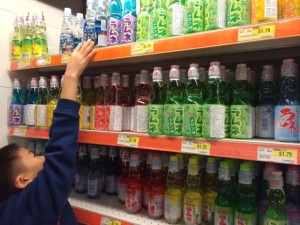
While the flavors of the Ramune sodas seem overly sweet and subtle to me, my kids seem to like them. I think it’s possibly the cool bottle design though. There is a marble in the neck that you have to push down into the bottle using a plastic piece. Sometimes it’s hard to push that sucker down!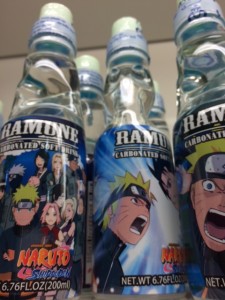
Once the marble is released into the soda, the carbonation gas is released and the soda fizzes right up. The marble stays inside the bottle, rattling around while you drink. I think my kids like that as well.
I thought the Japanese soda manufacturers invented this bottle but when I investigated, I found that this is actually technology invented by the Brits way back in 1872. While Codd bottles fell out of use in Europe, and never gained much traction in North America, they were crazy popular in Asia. From BoingBoing
This video shows how the Ramune soda works. You can see us struggle to push the ball into the neck of the bottle!
Ramune Marble Soda
Ramune is widely known for the distinctive design of its bottle, often called Codd-neck bottles after the inventor, Hiram Codd. They are made of glass and sealed with a marble; the codd head is held in place by the pressure of the carbonation in the drink. To open the bottle, a device to push the marble inward is provided. The marble is pushed inside the neck of the bottle where it rattles around while drinking. The drinks are sometimes called “marble soda” outside of Japan. From Wikipedia
Alexander Cameron Sim (August 28, 1840 – November 28, 1900) was a Scottish-born pharmacist and entrepreneur active in Japan during the Meiji period. In 1884, Sim introduced a carbonated beverage based on lemonade to the Kobe foreign settlement. This drink, called “mabu soda” for “marble soda” due to the marbles placed in the bottle for opening action, soon became very popular with the local Japanese after it was advertised in the Tokyo Mainichi Newspaper as a preventative for cholera. The drink remains a popular soft drink, sold nationwide, under the name of ramune to this day. From Wikepedia
The Science of Japanese Ramune Soda for Kids
This video shows the science of carbonation. It’s from Cook’s Illustrated on the science of bubbles in carbonation. It’s intended for adults but kids might like it too. The key to carbonation is the temperature of the liquid at the time of carbonation (colder is fizzier!). When the gas escapes, the liquid becomes fizzy. When the gas is gone, the liquid becomes flat. Notice how the marble has a role in carbonation!
This is an interesting video series that shows 40 objects that have shaped the United Arab Emirites. One such object? The Codd-neck soda bottle by way of India back in the 1920’s because of the Brits!! It was the first form of soda in the Middle East! The Codd-neck bottle was everywhere!
How the Codd-neck Bottle Works
In 1872, British soft drink maker Hiram Codd of Camberwell, London, designed and patented a bottle designed specifically for carbonated drinks. The Codd-neck bottle was designed and manufactured to enclose a marble and a rubber washer/gasket in the neck.
The bottles were filled upside down, and pressure of the gas in the bottle forced the marble against the washer, sealing in the carbonation.
The bottle was pinched into a special shape to provide a chamber into which the marble was pushed to open the bottle.
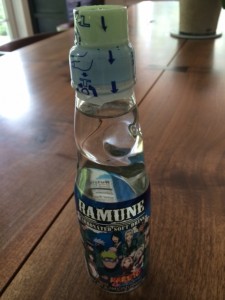
This prevented the marble from blocking the neck as the drink was poured. From Wikipedia
If you don’t have an Asian supermarket near you but want to try Japanese Ramune soda, I found some online sources for you.
The Asian Food Grocer has a great assortment.
There are also a lot of favors available at Amazon.
To examine any Ramune Soda more closely at Amazon, please click on image of Ramune.
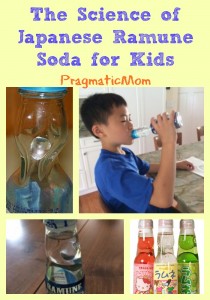
As an Amazon Associate, I earn from qualifying purchases.
Follow PragmaticMom’s board Science Fun on Pinterest.
BEST #OWNVOICES CHILDREN’S BOOKS: My Favorite Diversity Books for Kids Ages 1-12 is a book that I created to highlight books written by authors who share the same marginalized identity as the characters in their books.

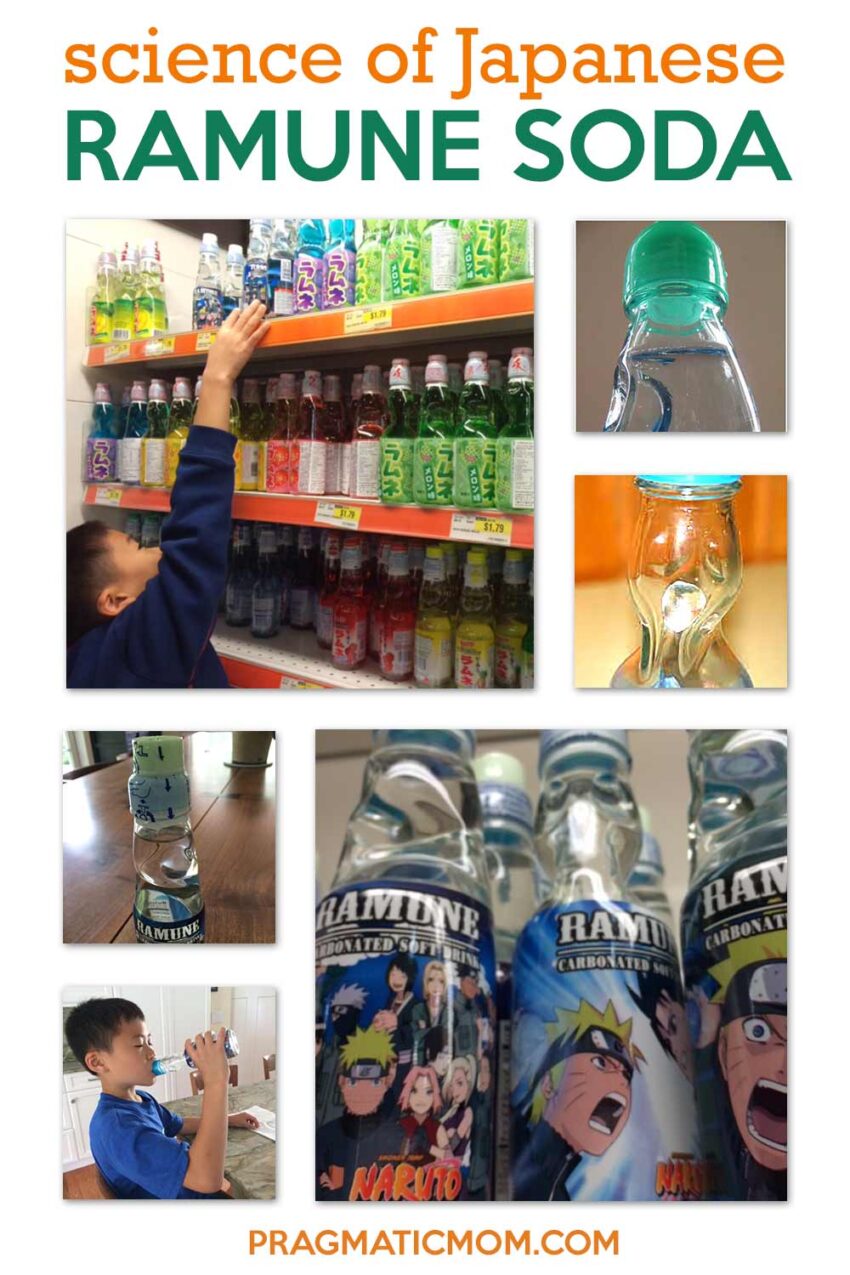
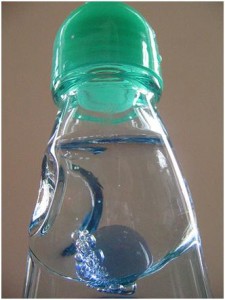
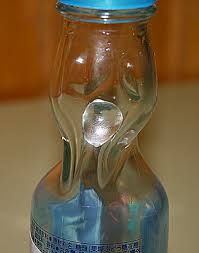

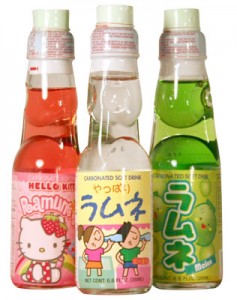












Interesting! We went to the Japan Fest at our museum of art recently but I don’t think they had these. (They had some other kind of Japanese soda, though.) They did have tables set up to play Go. Are you familiar with it? It seemed hard and easy at the same time. Strategic like chess, so Dylan was instantly into it.
Hi Dee,
That’s so funny you should ask; my kids just started playing Go with their father who grew up playing Go in Korea. I wonder if you can find Ramune Soda at a local Japanese restaurant?
What an interesting drink. Is the marble intended for the child at the end? Or is it removed before they drink it? I love how everything has an element of art in Asian cultures. Who would have thought about a fizzy drink.
Your post compliments my MG share today. Perhaps you’ve read it.
Hi Patricia,
The marble stays stuck in the bottle so no choking hazard though it does look tempting to remove and play with! The way you push the marble in makes it impossible to remove without breaking the heavy bottle. I’m linking to your post on Father’s Chinese Opera: http://childrensbooksheal.com/2014/11/21/fathers-chinese-opera/
The marble is actually to make it last. Holding the bottle upside down on will stop the flow of soda coming out, making it last longer. If you try to break the glass, it won’t. Kids in japan tried to break the bottle injuring the kids with all the glass shards. The bottles glass is now very sturdy. It’s still possible to get the marble. But it’s very hard 😅
Actually my friends and I tried it. They had a hard time but I threw it down a little forward and hard and it shattered everywhere. We tried for a little while to look and see if the marble was intact but it was not 🥲. The next day there was still glass all over that sidewalk.
Hi Caylee,
Oh no! We haven’t had that experience though it is a little tricky to push the marble down.
The plastic top has thread you can screw off and the marbel is out
Interesting article about the history of this product. Just wondering…if there is a label listing ingredients and how much sugar they contain.
Hi Barbara,
I think there is a label but the ingredients might be in Japanese. It’s a sweet drink though! I will have to ask my Japanese national friends to translate for me if it’s not already bi-lingual.
Very interesting! I think I have seen these bottle before but had no idea they had such a history.
Hi Ann,
Me neither! I love that it has such a long past!
Josie loves these! I, myself, think that they are pretty cool, but I don’t like soda. 🙂
Hi Erik,
Does she need your help to push the marble through? It was tougher than I realized!
Most of the time she can do it but sometimes she needs help. 🙂
You are nice to help her Erik! I can barely push it through myself!
My kids love these, too. Fun & educational post! 🙂
Hi Eva,
Yay! I’ll let my son know! That will make him really happy!!! Thank you!!
Thanks for this post! I made our weekly homeschool science lesson based on it. I found the soda at Cost Plus World Market for far less than on Amazon…about $2/bottle. The kids loved it!I did find another link that showed a very old video of the bottles being made and thought I’d share it here. If you search youtube under “APEGG – Codd Bottle – Old soda glass container with marble closure. Glass Industry, 20th Century”
Hi Robin,
That makes me so happy that you did as a homeschool lesson! It’s amazing that Codd Neck bottle, isn’t it and how it’s traveled the world changing what people have access to?! Thanks for your great video suggestion. I’ll put the url here since you weren’t able to: https://www.youtube.com/watch?v=Pxz_pe77AFM
Thanks for the great video Robin. It’s so interesting how intricate the Codd Neck Bottle was to manufacture and did you see the women working the line? I love watching how things are made!
Morning, I have to correct your article just a bit – good job getting everyone interested in it as it’s a great drink and have switched from caffinated soda to Ramune as it’s caffeine free. Anyhow, the history of Ramune(pronounced ra-mu-nae) goes back to 1841 in Japan. Scottsman Alexander Sim was a phamicist who wanted to give something to the children that came into his store instead of sweets. Back then Ramune didn’t have carbonation in it as Carbonation was brought over from the states. The marble used in the bottle was origionally used as a mixing ball for the ingrediants that went into the drink as it was marketed at one time as a prevenative for cholora.
Myself and the family stopped at a local japanese hibatchi house last night and when I inquired about the drink, they explained the history. Most of the searching iv’e done has concluded the same history as I noted above, everything except for the marble which acts as the cap/mixing ball/stop valve.
Here in the states Sangaria imports Ramune and the ingrediants listed on the origional(my favorite one) are carbonated water, sugar, natural flavor(lemon), citric acid, and sodium citrate. The Nutritional info lists as 80 calories, 0g of fat, 0g of saturated fat, 0mg of cholesterol, 5mg of sodium, 20g of carbohidrates, 20g of sugar, and 0g or protien.
Even though Ramune has 80 calories and 20g of sugar, when compared to the likes of other lemon soft drinks such as Sprite or store branded lemon water, Ramune is healthier for you. There’s also a youtube video called 10 facts about Ramune by Bento Kento that explains the history good also.
Kudos,
MAtt
Thanks for the correction Matthew!! I’m posting your video link: https://www.youtube.com/watch?v=4boZ1op4Zrs both here and adding it to my post. I looked up Alexander Cameron Sim and added that too. So, it seems that the bottle was the invention that carbonated soda but Alexander Sim used the bottle to introduce soda to Japan.
What an absolutely ridiculous and insulting title.
“Ramune for kids”
I know more adults that drink it than kids.
It’s “Science of Japanese Ramune Soda for Kids.” The unit is about the science of the soda that is meant for a kid audience to get kids interested in STEM through soda. It’s not “Japanese Ramune Soda for Kids” because only kids drink Ramune soda. If you read my post, you will see how the science of Ramune soda evolved as a drink in countries where carbonation wasn’t available.